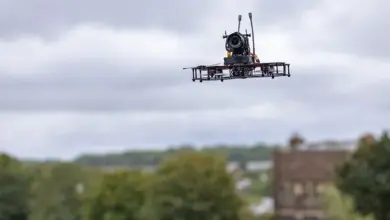
Introduction
As urban populations continue to grow worldwide, the need for more efficient, sustainable, and interconnected cities has become a pressing challenge. Enter the concept of “smart cities,” urban environments that leverage technology and data-driven insights to enhance the quality of life for residents, optimize resources, and create more sustainable and resilient urban ecosystems. Smart cities represent a revolutionary blend of urban planning, innovation, and digital transformation. Urban tech—the suite of technologies that powers these cities—plays a pivotal role in reshaping the urban landscape, addressing issues like energy consumption, transportation, safety, and environmental sustainability.
In this article, we will explore the concept of smart cities, their key components, the technologies driving their development, and the benefits and challenges associated with implementing urban tech.
What is a Smart City?
A smart city is an urban area that uses digital technologies and data analytics to improve the efficiency of city services, optimize infrastructure, and create better living conditions for residents. At its core, the smart city concept revolves around using interconnected devices and sensors—referred to as the Internet of Things (IoT)—to collect real-time data. This data is then processed and analyzed to make informed decisions that enhance urban life in areas such as traffic management, energy consumption, waste collection, public safety, and more.
The idea is to create a more sustainable and efficient urban environment by utilizing technology to solve complex urban challenges. Smart cities go beyond technology; they aim to create healthier, safer, and more vibrant communities where citizens are actively engaged in decision-making processes.
Key Components of Smart Cities
Smart cities encompass a broad range of interconnected systems. Some of the key components include:
1. Smart Infrastructure
One of the primary goals of smart cities is the development of advanced infrastructure that optimizes resources and minimizes environmental impact. Smart grids, for instance, enable real-time monitoring of energy consumption and allow for more efficient distribution. This helps reduce energy waste and can even incorporate renewable energy sources such as solar or wind.
Similarly, smart water management systems use sensors to monitor water usage and detect leaks in real-time, preventing waste and reducing the strain on water resources. Smart buildings are designed with energy-efficient systems, automated controls for lighting and temperature, and energy monitoring systems to reduce carbon footprints.
2. Smart Transportation
Transportation is a major area where smart technologies are transforming urban life. Traffic congestion, pollution, and inefficient public transportation are common issues in densely populated cities. Smart transportation systems use data from sensors, GPS, and traffic cameras to optimize traffic flow, reduce congestion, and promote the use of public transportation.
Ride-sharing apps, electric vehicles (EVs), and autonomous vehicles are also integral to the transportation network in smart cities. By encouraging the use of electric and autonomous vehicles, smart cities aim to reduce carbon emissions and improve mobility for all citizens. In addition, smart parking systems guide drivers to available parking spaces, reducing the time spent searching for parking and further alleviating congestion.
3. Smart Governance
Smart governance refers to the use of digital tools to make government services more efficient, transparent, and accessible. This could involve digitizing administrative services such as applying for permits, paying taxes, or accessing public records. By streamlining bureaucratic processes through e-government platforms, smart cities aim to enhance citizen participation, improve service delivery, and reduce corruption.
Citizens can also engage with local governments through online platforms, providing feedback on city services, participating in decision-making, and even collaborating on urban projects. This citizen-centric approach ensures that the voice of the community is heard and plays an active role in shaping the future of the city.
4. Smart Environment
Sustainability is a core focus of smart cities. Urban tech solutions are used to monitor air quality, track pollution levels, and reduce greenhouse gas emissions. Cities employ smart waste management systems that optimize the collection and disposal of waste, reduce landfill usage, and promote recycling.
Green spaces, rooftop gardens, and energy-efficient buildings are designed to improve air quality and reduce the urban heat island effect. Additionally, smart cities implement climate resilience strategies by analyzing weather data and preparing for natural disasters such as floods or heatwaves, ensuring the safety of citizens and the protection of infrastructure.
5. Smart Healthcare
Healthcare is another critical area in smart cities. Digital health technologies like telemedicine, health apps, and wearable devices allow residents to monitor their health, access medical services remotely, and receive real-time updates on public health issues. This is particularly important in densely populated urban areas where access to healthcare services can be limited.
By integrating health data with smart city platforms, public health officials can identify trends in illness outbreaks, track air quality to predict respiratory issues, and allocate resources more effectively. Smart hospitals and clinics also employ automated systems for patient care, inventory management, and diagnostics.
Technologies Driving Smart Cities
Urban tech encompasses a wide range of technologies that work in tandem to build smart cities. Some of the most significant technologies include:
1. Internet of Things (IoT)
The Internet of Things is the foundation of smart cities. IoT devices are embedded with sensors, software, and network connectivity, enabling them to collect and exchange data. In a smart city, IoT devices are used in streetlights, traffic signals, waste bins, parking meters, and even public transportation systems to monitor and manage urban resources in real-time.
2. Artificial Intelligence (AI)
AI is key to processing and analyzing the vast amounts of data generated by IoT devices. AI algorithms help identify patterns in the data, predict future trends, and automate decision-making processes. For example, AI can predict traffic congestion based on historical data and adjust traffic signals accordingly or optimize energy usage in buildings based on weather forecasts.
3. Big Data Analytics
Smart cities rely on big data analytics to make sense of the enormous quantities of data collected from sensors and devices. Big data enables cities to derive actionable insights from raw data, such as identifying areas with high energy consumption or predicting crime hotspots. By analyzing data patterns, cities can allocate resources more effectively and plan for future growth.
4. 5G Connectivity
High-speed internet is critical for the functioning of smart cities, and 5G technology offers the speed and bandwidth necessary to support a massive number of interconnected devices. With 5G, smart cities can deploy more advanced IoT devices and real-time applications, such as autonomous vehicles, smart traffic management, and remote healthcare services.
5. Blockchain Technology
Blockchain is emerging as a solution for secure and transparent data management in smart cities. It can be used for various applications, including secure digital identity management, transparent financial transactions, and smart contracts for services like energy distribution or waste collection.
Benefits of Smart Cities
The shift toward smart cities offers numerous benefits for both residents and urban planners:
1. Improved Quality of Life
Smart cities enhance the quality of life for residents by providing better access to services, reducing pollution, and improving safety. Efficient transportation systems, lower energy consumption, and smart healthcare services all contribute to a healthier, more sustainable urban environment.
2. Economic Growth
Smart cities drive economic growth by fostering innovation, attracting tech companies, and creating job opportunities in sectors like IoT, AI, and data analytics. Smart infrastructure also reduces operational costs for cities, enabling them to reinvest in further development.
3. Sustainability
Sustainability is at the heart of smart cities, with a focus on reducing resource consumption, lowering carbon emissions, and promoting green energy. By optimizing energy, water, and waste systems, smart cities can significantly reduce their environmental impact.
4. Enhanced Public Safety
Data-driven policing, smart surveillance systems, and predictive analytics help improve public safety. By identifying crime patterns and deploying resources more effectively, smart cities can reduce crime rates and enhance the overall safety of residents.
Challenges of Implementing Urban Tech
While the benefits of smart cities are clear, there are several challenges to implementing urban tech:
1. Data Privacy and Security
The collection of vast amounts of personal data raises concerns about privacy and security. Cities must ensure that data is handled responsibly and that robust cybersecurity measures are in place to prevent data breaches and misuse.
2. High Costs
The deployment of smart city infrastructure requires significant upfront investment in technology, sensors, and communication networks. This can be a barrier for developing nations or smaller cities with limited budgets.
3. Interoperability
A key challenge for smart cities is ensuring that different systems and devices can communicate and work together seamlessly. Without standardization, cities may face difficulties in integrating various technologies and platforms.
4. Digital Divide
Not all residents may have equal access to the technology and services provided by smart cities. This digital divide can exacerbate social inequalities, especially in low-income neighborhoods where access to high-speed internet or smart devices may be limited.




